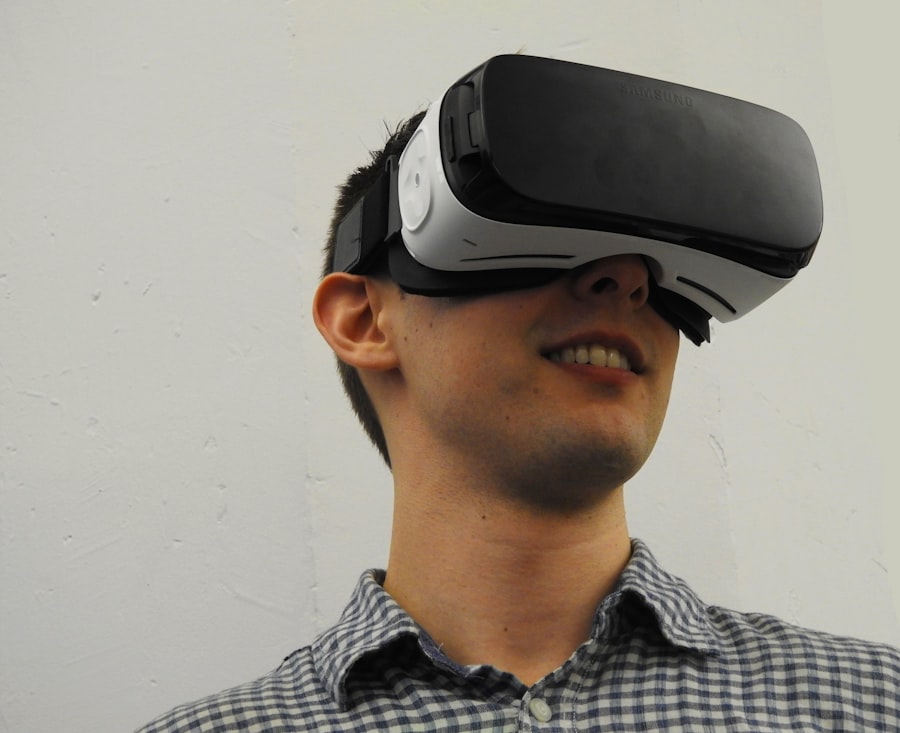Download links
How to install Exploring the Virtual Life: Navigating the Digital World APK?
1. Tap the downloaded Exploring the Virtual Life: Navigating the Digital World APK file.
2. Touch install.
3. Follow the steps on the screen.
Description
The digital world has become an integral part of our daily lives, shaping how we communicate, work, and interact with one another. With the advent of the internet and the proliferation of smartphones, we find ourselves immersed in a landscape that is constantly evolving. This digital realm encompasses a vast array of platforms, from social media networks to online marketplaces, and it has transformed traditional notions of community and connection.
The digital world is not merely a tool for convenience; it has redefined the very fabric of society, influencing cultural norms, economic structures, and even personal identities. As we navigate this complex environment, it is essential to recognize both its opportunities and challenges. The digital world offers unprecedented access to information and resources, enabling individuals to learn, collaborate, and innovate in ways that were previously unimaginable.
However, it also presents significant risks, including issues related to privacy, misinformation, and the potential for addiction. Understanding the dynamics of this digital landscape is crucial for individuals and communities alike as they seek to harness its benefits while mitigating its drawbacks. The interplay between technology and human behavior continues to evolve, prompting ongoing discussions about the implications of our increasingly interconnected lives.
Key Takeaways
- The digital world has become an integral part of our daily lives, impacting how we communicate, work, and socialize.
- Navigating virtual spaces requires digital literacy and an understanding of online etiquette to effectively engage in online communities.
- Building and maintaining virtual relationships requires active communication, empathy, and the ability to establish trust and rapport in a digital environment.
- Balancing real life and virtual life is essential for maintaining a healthy lifestyle and ensuring that online activities do not overshadow real-world experiences.
- Technology can have both positive and negative impacts on mental health, and it is important to be mindful of our digital consumption and its effects on our well-being.
- The future of the digital world holds endless possibilities, from advancements in virtual reality to the integration of technology into various aspects of our lives.
Navigating Virtual Spaces
Navigating virtual spaces requires a unique set of skills and awareness that differ significantly from those needed in physical environments. The digital landscape is characterized by a multitude of platforms, each with its own rules, cultures, and user expectations. For instance, social media platforms like Facebook and Instagram prioritize visual content and personal branding, while professional networks like LinkedIn focus on career development and networking.
Understanding these nuances is essential for effective communication and engagement within each space. Users must adapt their approaches based on the context, audience, and purpose of their interactions.
Each of these spaces presents unique opportunities for connection and collaboration. For example, online gaming communities often foster strong bonds among players who share common interests and experiences. These interactions can lead to lasting friendships that transcend geographical boundaries.
Similarly, virtual collaboration tools like Slack or Microsoft Teams have revolutionized how teams work together, allowing for real-time communication and project management regardless of physical location. As individuals become more adept at navigating these diverse virtual spaces, they can leverage their potential to build networks and foster creativity.
Building and Maintaining Virtual Relationships

The art of building and maintaining virtual relationships is a nuanced endeavor that requires intentionality and effort. Unlike face-to-face interactions, where non-verbal cues play a significant role in communication, virtual relationships often rely heavily on written words and digital expressions. This shift necessitates a greater emphasis on clarity and empathy in communication.
For instance, using emojis or GIFs can help convey tone and emotion in a way that text alone may not achieve. Additionally, active listening—though more challenging in a digital context—remains crucial for fostering understanding and connection. Maintaining these relationships over time poses its own set of challenges.
The fast-paced nature of the digital world can lead to feelings of disconnection or neglect if individuals do not prioritize their virtual connections. Regular check-ins through messages or video calls can help sustain these relationships, ensuring that they remain vibrant and meaningful. Furthermore, participating in shared activities—such as online gaming sessions or virtual book clubs—can strengthen bonds by creating shared experiences.
As individuals invest time and energy into nurturing their virtual relationships, they often find that these connections can be just as fulfilling as those formed in person.
Balancing Real Life and Virtual Life
| Metrics | Real Life | Virtual Life |
|---|---|---|
| Time Spent | 8 hours/day | 4 hours/day |
| Social Interaction | Face-to-face | Online |
| Physical Activity | Exercise, outdoor activities | Minimal |
| Work/Productivity | Office or field work | Remote work, gaming |
| Mental Health | Stress, anxiety | Dependence, addiction |
Striking a balance between real life and virtual life is an ongoing challenge for many individuals in today’s digital age. The allure of the online world can be overwhelming, with constant notifications and the temptation to scroll through social media feeds consuming valuable time that could be spent on face-to-face interactions or personal pursuits. This phenomenon has led to discussions about the importance of digital detoxes—periods during which individuals intentionally disconnect from their devices to reconnect with the physical world around them.
Establishing boundaries is essential for maintaining this balance. Setting specific times for checking emails or engaging with social media can help individuals reclaim their time and focus on real-life relationships and activities.
By consciously prioritizing real-life interactions alongside their digital engagements, individuals can cultivate a more harmonious existence that honors both aspects of their lives.
Understanding the Impact of Technology on Mental Health
The relationship between technology use and mental health is complex and multifaceted. On one hand, digital platforms can provide support networks for individuals facing mental health challenges. Online communities offer a sense of belonging for those who may feel isolated in their offline lives.
For example, forums dedicated to mental health discussions allow users to share experiences, seek advice, and find solace in knowing they are not alone in their struggles. Teletherapy services have also gained popularity, providing accessible mental health support through video calls or messaging. Conversely, excessive technology use can contribute to various mental health issues, including anxiety, depression, and feelings of inadequacy.
The curated nature of social media often leads individuals to compare themselves unfavorably to others, fostering a sense of dissatisfaction with their own lives. Additionally, the addictive qualities of certain digital platforms can lead to compulsive behaviors that detract from real-life experiences and relationships. Understanding these dynamics is crucial for individuals seeking to navigate their digital lives mindfully while prioritizing their mental well-being.
Exploring the Future of the Digital World

As we look toward the future of the digital world, several trends are poised to shape its evolution significantly. One notable development is the rise of artificial intelligence (AI) and machine learning technologies that are increasingly integrated into our daily lives. From personalized recommendations on streaming services to AI-driven customer service chatbots, these advancements promise to enhance user experiences while also raising ethical questions about privacy and data security.
Moreover, the concept of virtual reality (VR) is gaining traction as a means of creating immersive experiences that blur the lines between physical and digital realities. VR technology has applications ranging from gaming to education and therapy, offering new ways for individuals to engage with content and connect with others. As these technologies continue to advance, they will undoubtedly influence how we interact with one another and perceive our surroundings.
In addition to technological advancements, societal attitudes toward the digital world are also evolving. There is a growing recognition of the need for digital literacy education that empowers individuals to navigate online spaces safely and responsibly. As awareness of issues such as cyberbullying, misinformation, and data privacy increases, communities are beginning to advocate for more robust policies that protect users in the digital realm.
The future of the digital world holds immense potential for innovation and connection but also necessitates careful consideration of its implications for society at large. As we continue to explore this dynamic landscape, it is essential to remain vigilant about the impact of technology on our lives while embracing the opportunities it presents for growth and collaboration.
FAQs
What is virtual life?
Virtual life refers to the experience of living and interacting in a digital or virtual environment, often through the use of technology such as virtual reality, augmented reality, or online platforms.
What are some examples of virtual life?
Examples of virtual life include virtual reality games and simulations, social media platforms, online communities, and virtual worlds such as Second Life and The Sims.
How does virtual life differ from real life?
Virtual life differs from real life in that it takes place in a digital or simulated environment, and the interactions and experiences are mediated by technology. While virtual life can offer a sense of escapism and creativity, it may not always accurately reflect the complexities and nuances of real life.
What are the benefits of virtual life?
Some potential benefits of virtual life include opportunities for creativity and self-expression, the ability to connect with others from around the world, and the potential for immersive and engaging experiences.
What are the potential drawbacks of virtual life?
Drawbacks of virtual life may include issues related to privacy and security, the potential for addiction or over-reliance on technology, and the risk of disconnecting from real-life relationships and experiences.
How is virtual life impacting society?
Virtual life is impacting society in various ways, including influencing how people socialize, work, and entertain themselves. It has also raised questions about the boundaries between the digital and physical worlds, and the implications for mental health and well-being.





